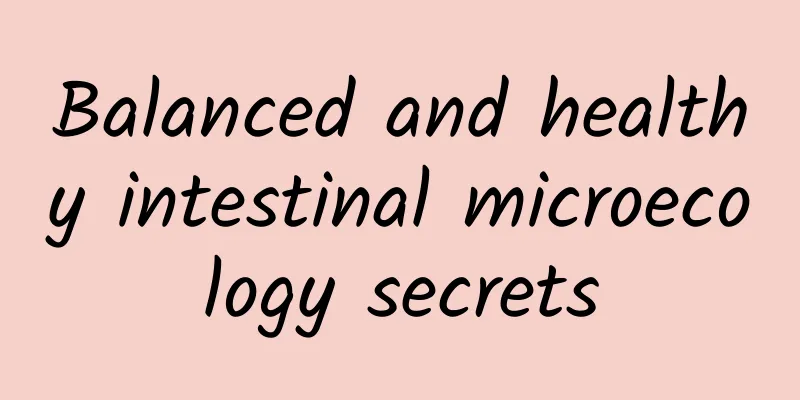Balanced and healthy intestinal microecology secrets

|
When E. coli arrives in the colon, it is a whole new world. The colon is winding, like a bunch of gourds. The gourds are connected to each other, and the bulge in the middle is just right for storing intestinal contents. E. coli is eaten along with food, and travels happily through the mouth, esophagus, stomach, duodenum and small intestine, and finally settles in the colon. The entire digestive tract, except for the mouth and pocket-shaped stomach, the esophagus, duodenum and small intestine are all tube-shaped, and only the colon is shaped like a beaded gourd. There are more than 400 different types of bacteria living in the colon along with E. coli. Some of them are spindle-shaped and are called Clostridium; others are spherical and are called cocci. E. coli looks different from them, being long rod-shaped, so microbiologists call them bacilli. The colon is the largest of all the intestinal tracts, also known as the large intestine, and this type of bacilli is also called E. coli. E. coli live in harmony with Clostridium and cocci, and they keep each other in check, so that the number of each is not too large, thus maintaining a relative balance between the populations. This balance is what microbiologists call the intestinal microecology. Every healthy person has this intestinal microecology. Therefore, it is not difficult to imagine that the food we eat is clean, but it is not absolutely sterile. There are a large number of microorganisms such as E. coli and other microorganisms that can only be seen under a microscope in our intestines. In different parts of the digestive tract, the beneficial components of food, such as amino acids, glucose, vitamins and fats, are continuously digested and absorbed. The remaining residues and wastes become what we call "poop" and are stored in the colon. Although these "poops" are excreted and smell terrible, they are precious raw materials that can be turned into treasures for E. coli and its partners. Different bacterial families in the intestinal microecological system have different tasks. For example, E. coli can help humans break down food residues, and use the components in these residues to synthesize vitamin K, which is essential for the human body. Clostridium and cocci can shoulder the heavy responsibility of producing some B vitamins, and E. coli will do it happily if it has spare capacity. With their tiny bodies, they partially guarantee the supply of B vitamins and vitamin K for the human body. B vitamins have many brothers and sisters, mainly including vitamin B1, B2, B3, B6 and B9, which are respectively related to the normal function of the human nervous system, vision and taste, and whether or not anemia occurs. Vitamin K is an important auxiliary raw material for the synthesis of coagulation factors with hemostatic effects. Once it is lacking, not only gum and nasal bleeding are prone to occur, but girls' menstruation is also prone to prolonged. E. coli and its companions are so important to the human body, but they are often regarded by humans as enemies that must be eliminated. This is because once the microecological balance between them is broken, it will bring diseases to humans. For example, when humans take a certain drug called antibiotics, the cocci in it are killed, and the bacilli and clostridia will lose the restraint or inhibition of the cocci and take the opportunity to grow and reproduce without scruples. There are too many of these two types of guys, hundreds of millions, which can not only consume most of the food residues, but also destroy the intestinal mucosa. At this time, the human body will have intestinal inflammation, the mucosa on the intestinal wall will be rotten, and abdominal pain, diarrhea and other symptoms are inevitable. For people with bad luck or poor resistance, these bacteria break through the intestinal wall, drill into the blood vessels, multiply in large quantities in the blood and produce toxins, and people's lives are in danger. Once the intestinal microecology is out of balance, for example, the number of E. coli population is too large and the number of clostridium and coccus is too small, causing the above-mentioned lesions, the solutions are nothing more than the following: taking antibiotics that can kill E. coli to reduce its number; taking orally microecological probiotic preparations containing clostridium or coccus, or taking fecal probiotic drugs made from extracts of healthy human feces, or using such drugs for enema through the anus to artificially increase the number of clostridium or coccus in the intestine, helping to restore the microecological balance between E. coli, clostridium and coccus, and promoting intestinal recovery. In the doctors' diaries, most patients with enteritis have the above-mentioned conditions to a greater or lesser extent. Some critically ill patients may also be related to the invasion of E. coli into the bloodstream. These are all the results of the disruption of the intestinal microecological balance. Therefore, it is not the case that the more bacteria in the intestines are killed, the better, nor is it the case that "if it is not clean, you will not get sick if you eat it". The best trick to maintain intestinal ecological health is to pay attention to dietary hygiene and maintain the microecological balance in the intestines. (The author Jing Fuchun is the chief physician of Baoji People's Hospital in Shaanxi Province and a member of the China Science Writers Association) |
<<: How do your gray hair grow little by little? The whole process is exposed!
>>: How to improve breathing difficulties in patients with COPD
Recommend
What causes spots on the breasts?
Breasts are a symbol of femininity. As they grow ...
I had a chest X-ray one month before my pregnancy.
Chest X-ray mainly refers to a chest X-ray examin...
Go bare-faced one day a week to prevent premature aging of the skin, massage to remove wrinkles
Everyone loves beauty. To be beautiful, fairies h...
Waking up often in the middle of the night means your body is getting old! Protect the "five powers" to stay young
Editor's note: With the improvement of living...
Brown vaginal discharge at 11 weeks of pregnancy
We all know that when a woman is pregnant, her me...
What causes lower abdominal discomfort in early pregnancy?
Women are prone to some abdominal discomfort symp...
Causes of abdominal pain in women
For women, if they experience lower abdominal pai...
What to do if hemorrhoids prolapse in late pregnancy
Hemorrhoids are common during pregnancy. Hemorrho...
In winter, health preservation is the key
Winter Solstice · Traditional Customs Eating dump...
Children's eye protection, these are what you need to know
Eyes are the windows to the soul, and protecting ...
How to maintain ovaries and uterus
Every woman hopes that she can stay young and bea...
What are the side effects of birth control pills?
"A short separation is better than a new mar...
What should I do if I have some bleeding during the second month of pregnancy?
Many pregnant women have problems during pregnanc...
Brown discharge after exercise
Many people have the habit of exercising. Regular...
How many months of pregnancy can you have sex?
How many months of pregnancy can you have sex? Th...









